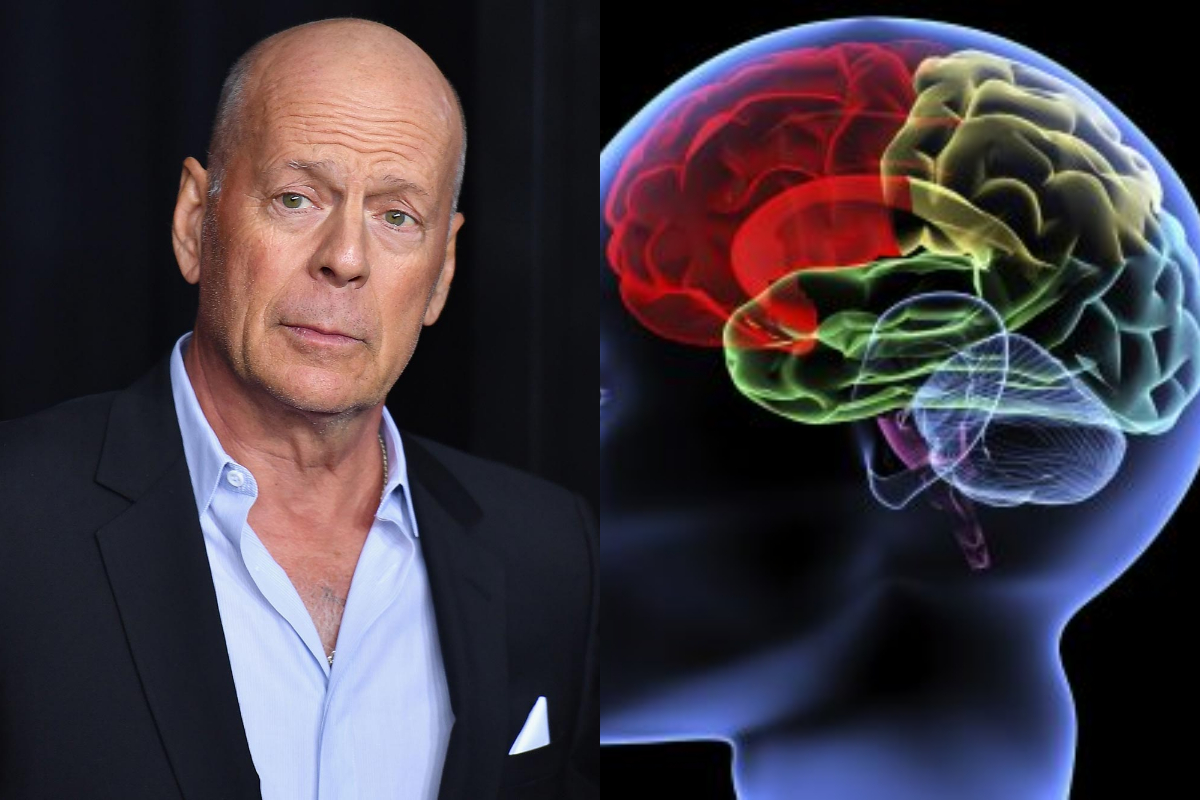- Frontotemporal dementia is characterized by the gradual loss of brain tissue.
- Bruce Willis announced that he is diagnosed with it recently.
- If not treated promptly, frontotemporal dementia symptoms may worsen over time.
Frontotemporal dementia is characterized by the gradual loss of brain tissue in the frontal and temporal lobes of the brain before symptoms appear. The illness has gained attention since the family of Hollywood star Bruce Willis, 67, announced that he had been diagnosed with it recently. Willis was given the diagnosis of aphasia, which impairs speech and language. This may have been an early indication of his dementia. If not treated promptly, frontotemporal dementia symptoms may worsen over time. The disorder manifests itself in behavioural changes, motor disorders, and difficulties with speech and language.
What is frontotemporal dementia? “Frontotemporal dementia is a neurological condition that primarily affects the nerves in the brain’s frontal and temporal lobes.” Typically, these brain regions are associated with personality, behavior, and language. Frontotemporal dementia symptoms can differ from person to person. Symptoms may become increasingly severe over time if ignored. Changes in behaviour, motor disorder and difficulties with speech and language are all signs of this disorder.
“Frontotemporal Dementia is an umbrella term for a group of brain disorders that primarily affect the frontal and temporal lobes of the brain.” “Damage to neurons causes these lobes of the brain to early atrophy and shrinkage.”
Frontotemporal dementia symptoms include unusual behaviour, emotional issues, difficulties communicating with others, difficulties at work, and difficulty walking. In contrast to other forms of dementia, FTD is uncommon and typically manifests early in life. Sixty percent of people with FTD are between the ages of 45 and 64.”
Extreme behavioural and personality changes are the most frequently cited symptoms of frontotemporal dementia.
“These include a decline in personal hygiene, changes in eating habits, generally overeating or developing a preference for sweets and carbohydrates, eating inedible objects and compulsively wanting to put things in the mouth,” as well as “loss of empathy and other interpersonal skills like having sensitivity to another’s feelings, lack of judgment, loss of inhibition, lack of interest (apathy) which can be mistaken for depression.”
Problems with speech and language some subtypes of frontotemporal dementia may cause speech and language difficulties or impairment. Frontotemporal dementia encompasses primary progressive aphasia, semantic dementia, and progressive agrammatic (non-fluent) aphasia.
“These conditions may cause problems such as difficulty using and understanding written and spoken language, such as difficulty naming things, not knowing what words mean, developing hesitant speech that may sound telegraphic, and making mistakes in sentence construction.”
Tremor, rigidity, muscle spasms or twitches, poor coordination, difficulty swallowing, muscle weakness, inappropriate laughing or crying, and problems walking or falling are all motor-related issues.
Frontotemporal dementia is characterized by a narrowing of the brain’s frontal and temporal lobes. In addition, the brain may accumulate certain substances. It is unclear what exactly caused these changes. Frontotemporal dementia may be linked to certain genetic mutations. If you have a family history of dementia, you may be more likely to develop frontotemporal dementia.
“Frontotemporal dementia (FTD) is a disease whose underlying causes remain a mystery at this time. Neurons, the cells that regulate nerve function, typically contain high levels of proteins known as tau and TDP-43 in FTD patients. Nevertheless, there are numerous unanswered questions regarding this condition. The damage caused by the accumulation of these proteins causes the neurons to die. However, in some instances, FTD can be traced back to genetic mutations or changes.”
Diagnosis of frontotemporal dementia “Signs and symptoms of the disease are considered because no single test can identify frontotemporal dementia.”
– Brain imaging, neurological testing, and lab tests are carried out in order to locate any additional impairments.
– Other conditions, such as liver or kidney disease, may be ruled out through blood tests. A sleep study to rule out obstructive sleep apnea as the cause of the patient’s symptoms may be recommended if the patient has symptoms of sleep apnoea (loud snoring and pauses in breathing while sleeping).
Because it is especially helpful in identifying the type of dementia at an early stage, neuropsychological testing is also used to test your reasoning and memory skills. This test may likewise help separate frontotemporal dementia from different reasons for dementia.
– Magnetic resonance imaging (MRI) and fluorodeoxyglucose positron emission tomography (FDG-PET) scans of the brain can assist in the identification of visible conditions such as clots, bleeding, or tumours that may be causing signs and symptoms.
Treatment “Frontotemporal dementia has no known cure or specific treatment at this time. Frontotemporal dementia can be controlled with the help of certain medications and speech therapy. Trazadone, one type of antidepressant, may be prescribed to alleviate the behavioural issues associated with frontotemporal dementia. For the treatment of behavioural issues associated with frontotemporal dementia, antipsychotic medications such as olanzapine (Zyprexa) and quetiapine (Seroquel) may also be recommended. Speech therapy may be recommended to patients with language difficulties in order to learn new communication methods.
[embedpost slug=”aphasia-symptoms-what-exactly-is-aphasia-following-his-diagnosis-bruce-willis-is-stepping-away-from-acting/”]
Read more


























